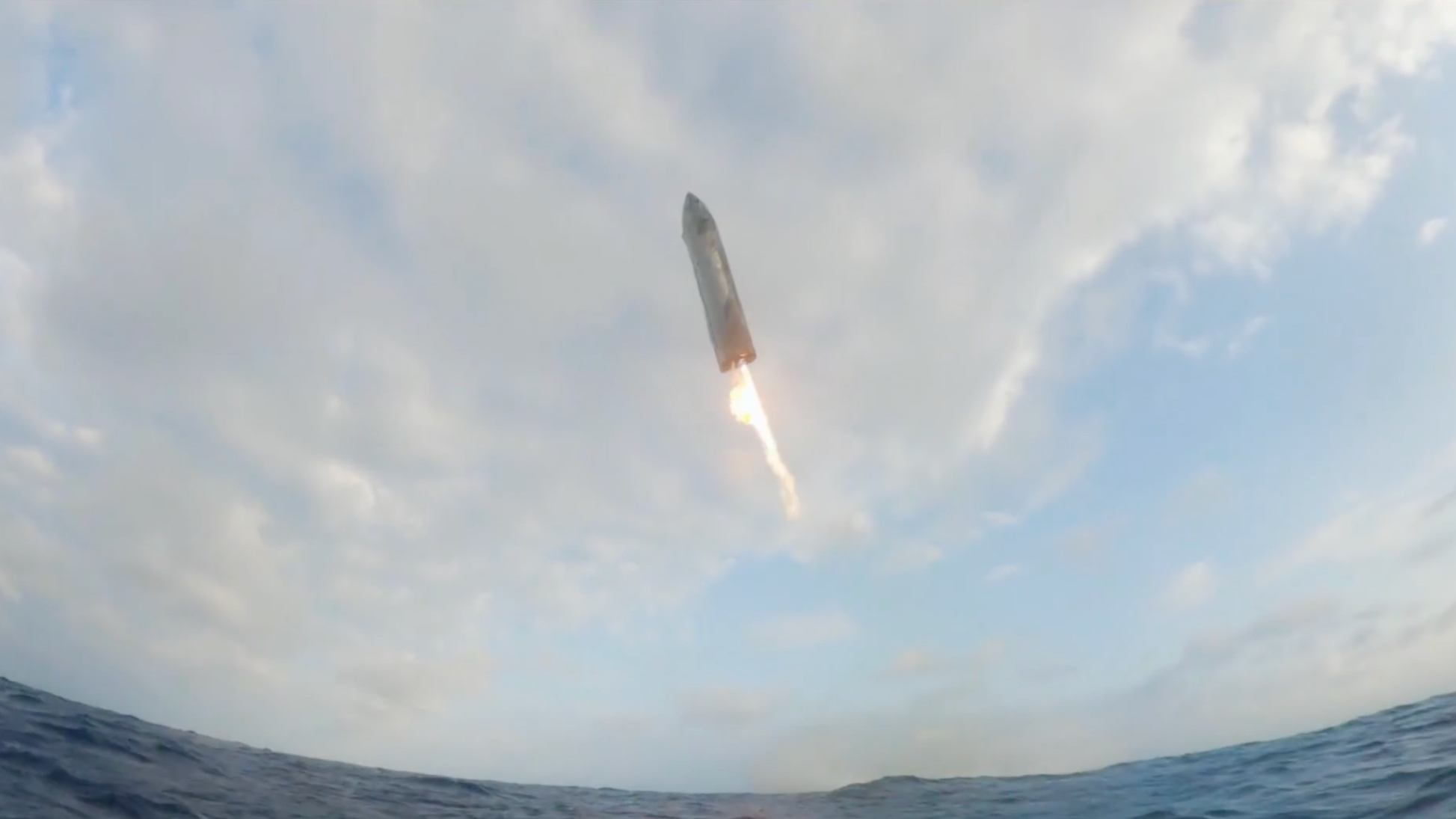Watch SpaceX Starship flight 6 splash down in amazing 'buoycam' footage (video)
A camera set up on a buoy in the Indian Ocean caught the end of SpaceX's latest Starship test flight, and it's quite a sight to behold.
That suborbital flight, which launched from SpaceX's Starbase facility in South Texas on Nov. 19, sent the 165-foot-tall (50 meters) upper stage of the Starship megarocket partway around the world, toward a patch of the Indian Ocean off the northwestern coast of Australia.
The spacecraft made it through Earth's atmosphere in one piece, maneuvering its way to a soft, controlled splashdown. And the buoycam captured this dramatic action, as SpaceX revealed in an X post on Nov. 22.
"Starship landing burn and splashdown in the Indian Ocean," SpaceX wrote in the post, which featured 23 seconds of buoycam footage.
The Nov. 19 test mission was the sixth for a fully stacked Starship, which stands nearly 400 feet (122 m) tall and is the biggest and most powerful launcher ever built. Flight 6's flight profile generally mirrored that of Flight 5, which occurred on Oct. 13.
There were some important differences, however. For example, Flight 5 launched in the morning Texas time, and its Indian Ocean splashdown occurred at night local time. But Flight 6 lifted off in the late afternoon, leading to a splashdown in daylight conditions. This was by design, as SpaceX wanted to get a better look at reentry, descent and landing.
Related: What's next for SpaceX's Starship after its successful 6th test flight?
Breaking space news, the latest updates on rocket launches, skywatching events and more!
On Flight 5, Starship's huge first-stage booster, known as Super Heavy, maneuvered its way back to the launch site, where it was caught by the "chopstick" arms of the launch tower.
That was the plan on Flight 6 as well, but a communications issue with the tower precluded a chopsticks catch attempt. Super Heavy instead diverted to perform a controlled splashdown in the Gulf of Mexico.
SpaceX plans to eventually catch both Super Heavy and the upper stage, called Starship or simply "Ship," with the chopstick arms. This will speed up the inspection and reflight process of the fully reusable megarocket, which the company is developing to help humanity settle the moon and Mars.

Michael Wall is a Senior Space Writer with Space.com and joined the team in 2010. He primarily covers exoplanets, spaceflight and military space, but has been known to dabble in the space art beat. His book about the search for alien life, "Out There," was published on Nov. 13, 2018. Before becoming a science writer, Michael worked as a herpetologist and wildlife biologist. He has a Ph.D. in evolutionary biology from the University of Sydney, Australia, a bachelor's degree from the University of Arizona, and a graduate certificate in science writing from the University of California, Santa Cruz. To find out what his latest project is, you can follow Michael on Twitter.

